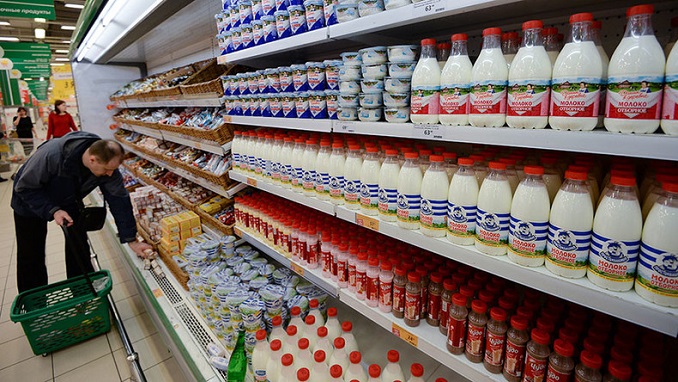Russia is entering the third decade in which the country is a net importer of food, despite growing into the world’s biggest exporter of grain, bneIntellinews writes.
During the late Soviet period, Russia was a large importer of grain, soybeans and soybean meal, but managed to move up on the list of major world grain exporters in recent years. The country has also become the world’s top wheat exporter, supplying 20-23% of total world exports in 2017–2018.
Around 2000, Russian agricultural production started to rebound, both in crops and livestock goods. Russian grain output began rising steadily: from 1996-2000 to 2017-2019, yearly production increased from 63 million metric tons (mmt) to 116 mmt. Wheat, barley and corn are the main grain crops, respectively comprising 66, 16 and 11% of the country’s total grain output in 2017-2019 in volume terms.
Growing grain output created sizeable surpluses for export. Russia moved from being a net grain importer of 3 mmt a year (annual average) during 1996-2000 to a net grain exporter of 47 mmt a year in 2017-2019, according to the Russian Journal of Economics (RJE).
Russian grain production (and correspondingly exports) has increased mainly because of rising yields rather than area. Russian harvested grain area fell from 58 million hectares during 1987-1991 to 40 million during 1996-2000, and then rebounded only slightly to 41 million hectares during 2017-2019.
Grain yields, on the other hand, have increased substantially, from 1.63 tons per hectare during 1987-1991 to 2.81 tons per hectare over 2017-2019.
“Drivers of the yield growth include a rebound in fertilizer use after major decline in the 1990s, the use of more advanced and technically superior inputs, some of them imported, such as high quality seeds and machinery, and a general improvement in farm management that reduces post-harvest losses and increases farm efficiency,” RJE says.
In the last few years Russia’s grain production has soared to around 45 mmt of grain. Russian shipments to customers around the world earned the country some $25 billion in 2019 – more than the value of its arms exports – the problem is that the food processing industry remains underdeveloped and Russia imports most of its fancy foods.
“Russia’s top agricultural exports are grain, fish & seafood, fats & oils,” says RJE. “In 2017-2018, Russia supplied 10-13% of total world grain exports and 20-23% of total wheat exports, which accounted for 80% of Russia’s total grain exports, in volume terms.”












